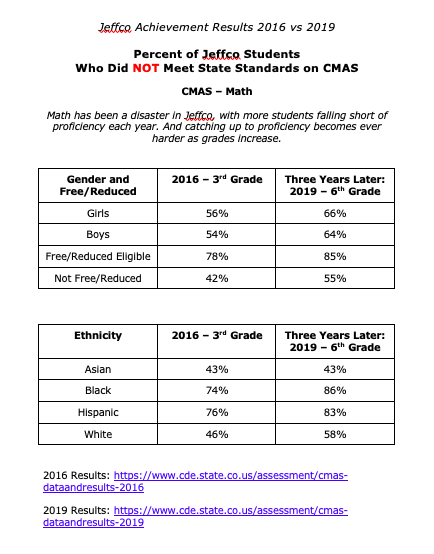Once They Have Fallen Behind, Catching Students Back Up to Proficiency is Very Hard
In "Catching Up to College and Career Readiness", ACT Inc. analyzed the percentage of 4th graders who had fallen behind that catch up to proficiency by 8th grade, and the percent of 8th graders who had fallen behind who catch up to College and Career Readiness (on the ACT tests) by 12th grade.
Of the 4th graders who were "off track" in reading (defined as less than one standard deviation below the cut score for proficiency), 37% caught up by 8th grade. But among the student who were "far off track" (more than one standard deviation below proficiency), only 10% caught up by 8th grade.
In math, the comparable percentages were 46% and 10%.
The ACT report makes it clear that catching up is harder for older students.
Among 8th graders who were "off track" in reading, only 29% caught up to College and Career Ready by 12th grade. And for those who were "far off track", only 10% caught up.
For math, the comparable percentages were 19% and 3%.
Historically, Jeffco has done a poor job of catching students back up to proficiency once they have fallen behind.

This is very close to the conclusion reached by Georgetown University's Edunomics Lab in their analysis of what it would cost to recover Jeffco's COVID learning losses.
Unfortunately, the district's 2022/2023 budget (which I voted against) allocates only $11 million — over three years — for tutoring to recover students' learning losses.
In my view, this is woefully insufficient to meet the challenge we face and completely unfair to our children and their future.